
The Golden Age of technologies keeps steadily striding along, thus actualizing various skills, job positions, and coding languages. It’s a trite, but true observation that many people are searching the best ways of applying their coding skills and obtain a good compensation for that in IT workforce. Since the tech industry is constantly evolving and new programming languages are invented hardly every day, it is important to know which language to learn as an investment of personal development.
We prepared the review, basing on the information, provided by a number of reliable and reputable sources. Various metrics were used for measuring the popularity of this or that language, including the frequency of language name’s mentioning in the web search, the number of job adverts and manuals sold, the number of projects in open source code repositories etc. So, which coding languages would rule the web in 2017? Let us refer to our review.
IEEE Spectrum’s interactive ranking of the most popular programming languages was composed with consideration of 12 various metrics. One may also filter the results, including or excluding particular metrics. According to their ranking, C language has taken the lead after two years in the second place. The second is Java and the third is Python, which has also strengthened its position, as compared to the previous years. C# has fallen out of the top five, replaced by R. Go rounds up the top 10.
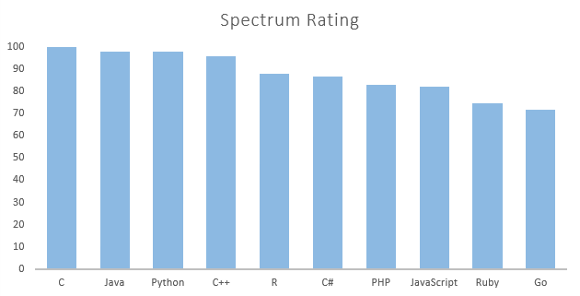
The TIOBE Programming Community index is updated once a month. Its ratings are based upon the number of skilled engineers around the globe, courses and third party vendors, calculated with the help of popular search engines. By a significant margin, the list is led by Java. Google’s Go appeared to be the most fast-paced language, having augmented 2.16% within one year. Awk, Alice, and VHDL close the top 50 with more than 0.2% of rating.
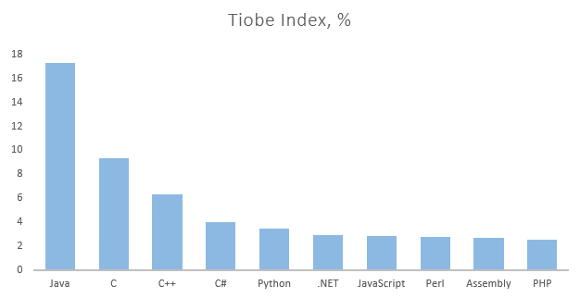
New Relic analyzed 16 million job listings at a job-finding website Indeed to find out that Java is well ahead of the other languages in terms of their demand. Among other favorites are JavaScript, C#, and C++.
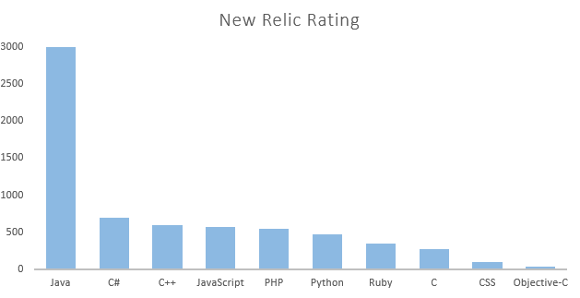
Coding Dojo also made a compilation of the data, obtained from job seeking website Indeed.com. According to it, the following 9 languages are the most desired by employers today (in descending order of preference): SQL, Java, JavaScript, C#, C++, Python, PHP, Ruby on Rails, iOS/Swift.
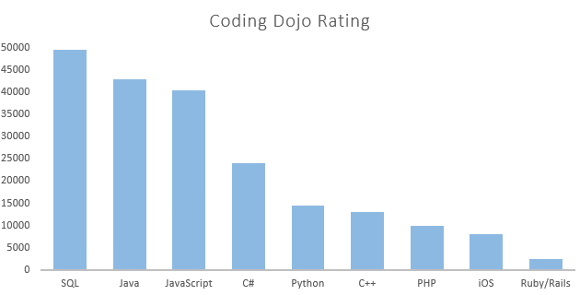
In the fall of 2016, guys from Tech Worm obtained an interesting piece of information, attached to Github’s inspiring stats that shed light on 15 most popular programming languages used on GitHub. JavaScript (the 1st), C# (the 8th), and Go (the 10th) almost doubled their growth. Although Swift and TypeScript got the last but one and last place in the rating, respectively, they demonstrated an amazing 3.5x pace of growing demand.
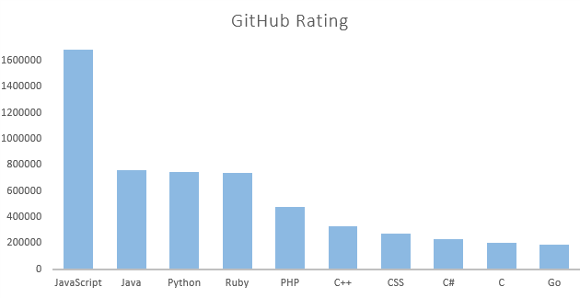
The PYPL (PopularitY of Programming Language) Index is based on the analysis of the number of language tutorials searched on Google. The dependency is simple: the more a language tutorial is searched, the more popular this language is considered to be. According to this statistic obtained a month ago, Java is the most topical language, JavaScript was the most proactive in jumping over the positions up, and Python grew the most over the last 5 years (+2.7%). PHP was the one to sustain casualties the most (-4.7%)
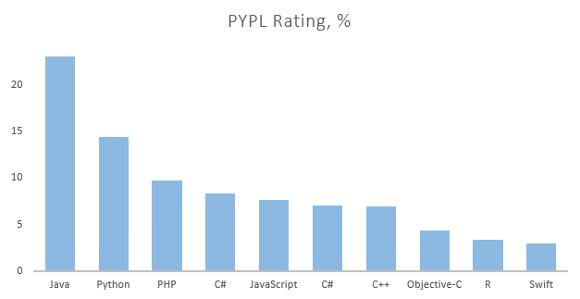
CodeEval, the platform for developer challenges and showcasing programming skills, collected data from processing over 1,200,000+ challenge submissions on their site. The analysis contains the info about 26 programming languages. According to it, Python has been a leader for five straight years, followed by Java, C++, and JavaScript. C# increased its submissions the most (+27%) and C (21%). While maintaining its leading positions, Python had a 14% drop in submissions.
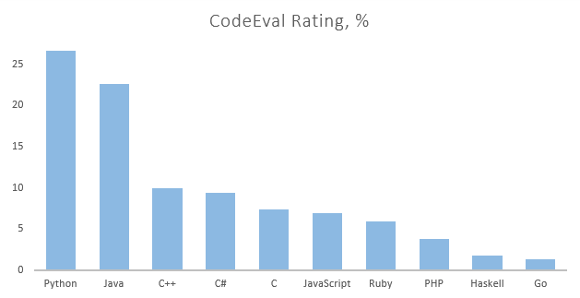
Business 2 Community expressed their opinion regarding the perspective of mastering specific computer skills. According to them, the last year the list of fifteen top-paying programming languages included Java, JavaScript, Python, C++ and C#, and this is quite predictable. The authors promise possible lucrative careers to those who start mastering any language from the list.
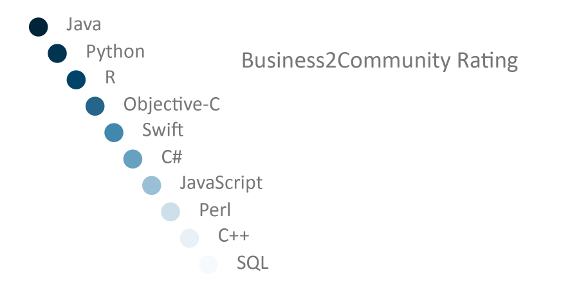
Half a year ago, RedMonk shared its biannual programming language ranking is compiled with the usage of combined method. They follow the correlation of the language discussion on Stack Overflow and the usage on GitHub. The pre-requisite for the language to be included in the list is its presence on both of these resources. The results are reassuring that JavaScript keeps its reputation of the fav among the developers. As for the Stack Overflow, its survey of more than 50,000 developers also gives the garland of victory to JavaScript. No considerable changes in the top-10 were not observed, while in the lower part of the list – the Top 20 languages – R language has displayed the most considerable rise over time.
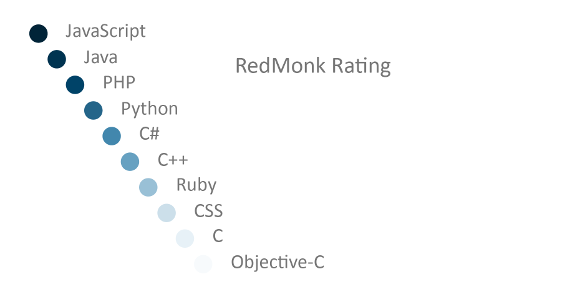
Thus, the top programming languages of 2017 will include JavaScript, Java, Python, and the languages from C family. Luckily, some of them, like JavaScript, are simple to learn and implement while giving the wide opportunities to the developers and users. Focusing on any of them won’t let you go wrong.


